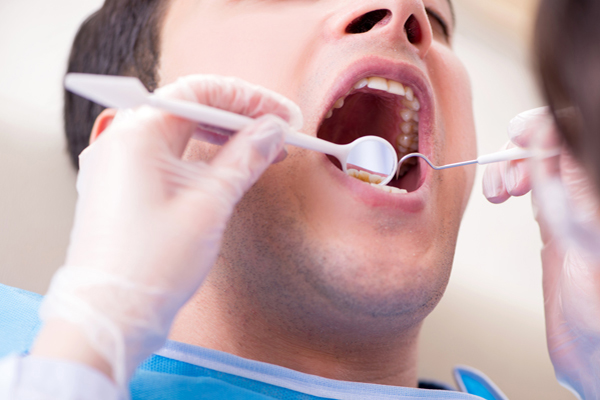How General Dentistry Practitioners Can Improve Smiles

General dentistry practitioners focus on preventative treatments that keep the teeth and gums healthy, but they can also perform restorative and cosmetic procedures. Some general dentists actually specialize in cosmetic treatments aimed at improving the way that the teeth look.
Ways that general dentistry practitioners improve smiles
Let us take a look at a few of the procedures that dentists who practice general dentistry often use to enhance their patients’ smiles.
1. Composite bonding
Composite bonding is a non-invasive treatment that can repair damage to teeth structures and enhance their appearance. The treatment involves covering up the tooth with layers of composite resin made from plastic and glass. The mixture is color-matched with the rest of the patient’s teeth, so any restorations made do not stick out.
Composite bonding does not involve making any permanent alterations to teeth being treated, and patients are free to explore other treatments in the future. Issues that composite bonding can be used to fix include spaces between teeth, damage to teeth structures, deformities, and discoloration.
2. Veneers
Veneers are tooth-shaped restorations that are placed on the front-facing parts of the teeth. These thin shells can cover flaws on the front parts of the teeth. They are constructed to look just like real teeth, making it virtually impossible to tell if someone has veneers.
Placing a veneer on a patient’s tooth typically involves removing enamel from it. Dentists do this to prevent the restoration from making the patient’s teeth appear unnaturally bulky. The quantity of enamel removed is proportional to the thickness of the veneer being used.
Placing veneers on a person’s teeth requires two trips to the dentist. The first visit is used to prep the teeth being treated and take an impression of them. The second visit takes place about two weeks later, once technicians in a dental lab make the patient’s custom veneers and send them back to the dentist. Issues that can be addressed with veneers include minor teeth alignment issues, deformities, chips, and discoloration.
3. Crowns
Crowns are among the most used restorations in general dentistry. They are tooth-shaped caps that are cemented over teeth. A crown covers the visible part of the tooth that it is placed on. This restoration prevents bacteria and acids in the mouth from getting to the tooth and protects it against bite forces.
A crown also requires removing enamel from the tooth being treated. Enamel is shaved off all the sides of the tooth to create a better fit for the restoration. This process is irreversible, so any teeth that have been prepared for crowns will always need restoration to serve as their artificial enamel.
Placing crowns typically requires two trips to the dentist because they have a similar manufacturing process as veneers. Issues that crowns can be used to address include tooth decay, gaps between teeth, deformities, discoloration, and damage to teeth structures.
4. Implants
Dental implants are one of the choices patients get to choose from if they have missing teeth. They are the only teeth replacement alternative that prevents the bone tissue loss that takes place when natural teeth fall out. The implant transfers bite forces into the jaw, giving bone tissues the stimulation they need to remain healthy.
Implants are surgically placed in the jawbone, so patients should be healthy enough to recover from minor oral surgery. Health issues like immune system disorders often make recovery after surgical treatments more challenging. Patients should also have enough jawbone thickness to hold implants in place. Bone grafts can be used to bolster the jaws of patients who have lost bone tissues in the jaw due to not replacing missing teeth.
Local anesthetics are typically administered during the placement of implants to prevent the patient from feeling pain as the dentist works. An incision is made in gum tissues to reach the jawbone; then the dentist makes a hole with a dental drill. The implant is placed in the hole. Bone tissues surrounding it hold it in place. Any incisions made are stitched up before sending the patient home.
The implant fuses with bone tissues around it for the next three to six months before the patient comes back for the second part of the treatment. A restoration like a crown is placed on the implant to restore it. The patient gets a replacement for missing teeth that should last the rest of their life.
We can improve your smile
Are you ready for a smile that you can be proud of? Give us a call or stop by our Encino clinic to set up an appointment with our dentist.
Request an appointment here: https://www.encinodentalassociates.com or call Encino Cosmetic & Dental Implants at (818) 578-2333 for an appointment in our Encino office.
Check out what others are saying about our dental services on Yelp: General Dentist in Encino, CA.
Related Posts
Regular visits to a general dentist are essential for maintaining optimal oral health. A general dentist is responsible for routine check-ups and cleanings and provides a wide range of services to prevent, diagnose, and treat various dental issues. From preventive care to restorative procedures, a general dentist plays a crucial role in ensuring your teeth,…
Seeing a general dentist for regular checkups should be part of your dental care routine. This dental professional can help maintain and even improve your teeth and gum health. Asking the right questions can help you know more about proper oral care. Below are some of the questions you can ask your general dentist during…
Your general dentist is here to provide some information about how to best take care of your teeth. Dental health and hygiene are essential to the overall health and wellness of your body. Without healthy teeth and gums, you will be unable to take in the nutrients and proteins necessary for your body to thrive…
Having cavities is one of the main reasons patients seek out the help of their dentist. Although you should go to your dentist regularly, many patients don't take the time for several reasons. However, it is difficult to ignore a cavity. It is not unusual for people to see their dentist because their cavity has…




